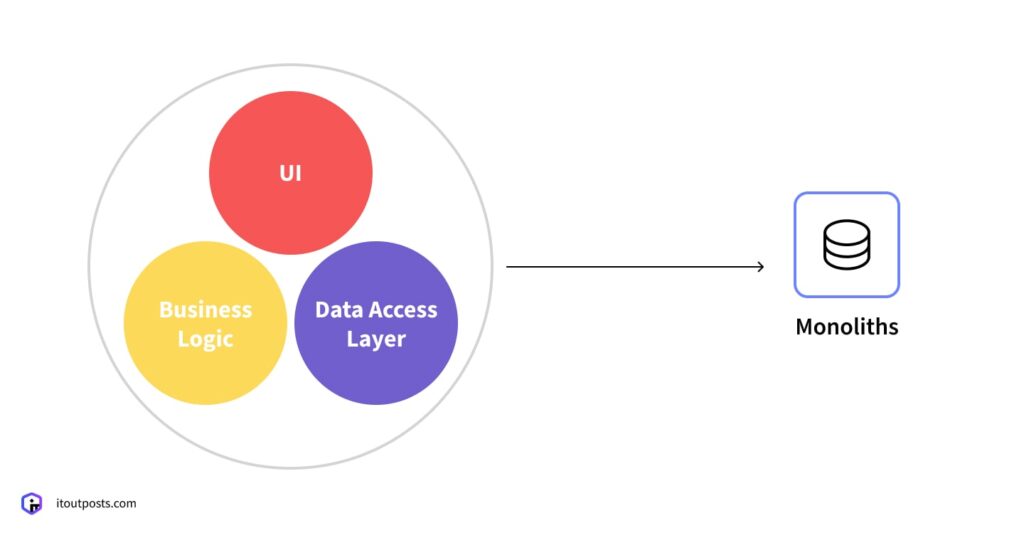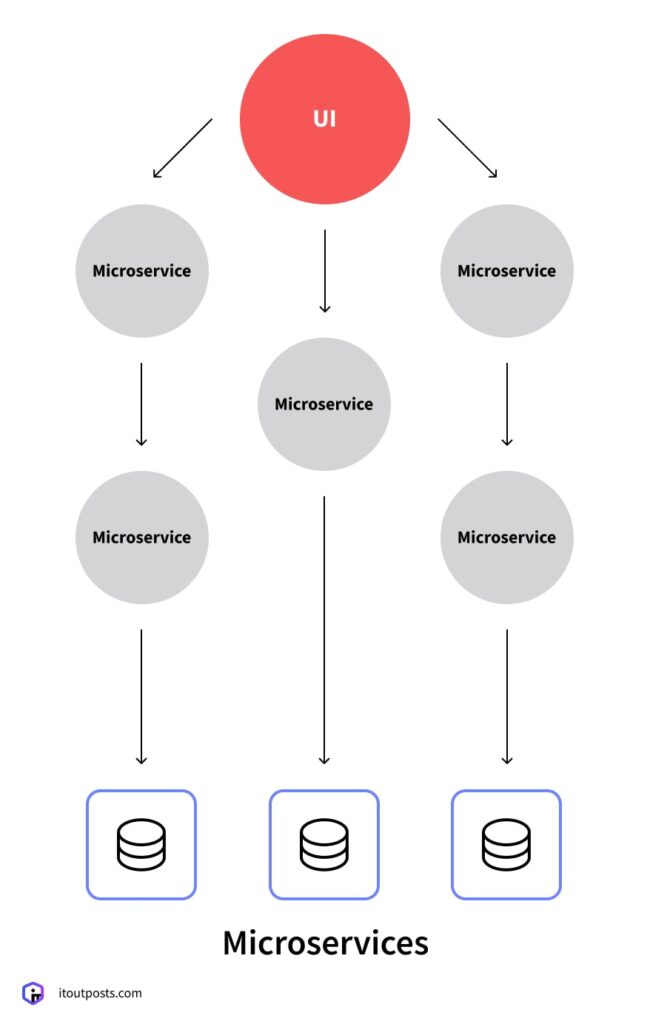Contents
Kubernetes has become a widely used solution for application deployment and management. It has an active community that continues to grow, and many Kubernetes success stories are shared at conferences and on DevOps service providers’ websites.
Its popularity and benefits proven in practice often make other organizations consider the transition to Kubernetes, too. But the issue is that not every project can be easily migrated in a short time.
Some apps can be transitioned quite quickly and with minimal changes. In contrast, other apps first require fundamental modifications, which can take months.
What category does your project belong to? This is critical to find out before you start investing time and resources in migration.
In this article, we answer this question and also examine the business considerations around whether Kubernetes migration makes sense for your specific situation.
What Is Kubernetes?
Kubernetes is an open-source platform that aims to automate the deployment, scaling, and, in general, the management of containerized applications. It takes on the complex task of orchestrating multiple containers while maintaining their coordination and the health of the system as a whole.
The history of Kubernetes began with Google when it created an internal system for orchestrating containers at scale. Since then, Kubernetes has become the basis for modern software, as it was designed to solve specific operational problems:
- How do you deploy updates without downtime?
- How do you automatically restart failed services?
- How do you scale an application up and down depending on the demand?
These problems have become especially acute since companies have started to use and manage hundreds or even thousands of containers at the same time.
What else makes Kubernetes powerful is that you don’t always have to manage it yourself—many solutions exist to simplify this process. Major cloud providers offer Kubernetes as a managed service:
- Amazon Elastic Kubernetes Service (EKS)
- Google Kubernetes Engine (GKE)
- Azure Kubernetes Service (AKS)
This significantly lowers the barrier to Kubernetes adoption.
But regardless of whether you choose a managed service or run your own clusters, the question remains the same: Is your application ready for Kubernetes from a technical point of view?
What Apps Aren’t Ready for Kubernetes Environment?
Kubernetes was designed to automate the deployment, scaling, and management of applications, particularly those using microservices and packaged in containers.

It can scale your app up or down based on demand by adding or removing containers. Kubernetes also spreads the workload across different pods if one fails and has many other features, like service discovery (to help services find and communicate with each other) and health monitoring, to put container orchestration literally on autopilot.
Trying to use it with systems that weren’t created for a Kubernetes environment can lead to complications and won’t let you take full advantage of what Kubernetes has to offer. Here are some examples of such architecture.
Monolithic Architecture
Monolithic architecture is an architecture built as a single large piece of code where all components, like user interface, business logic, and data access layers, are coupled and deployed together.

The nature of this architecture type contradicts Kubernetes’ logic, and, thus, mitigates the value the platform is supposed to bring to your application performance.
For instance, here’s how Kubernetes would work with monolithic app scaling: it would create additional copies of the entire monolith, even if only one service is under high load. This takes up a lot of resources, which isn’t efficient for businesses, but rather vice versa. Additionally, even a minor change to a system requires redeploying the entire app.
We’ve deployed Magento on Kubernetes, but only because our client had different locations across multiple countries and wanted to keep all their environments consistent. But for most monolithic projects like Magento, this approach doesn’t make much sense. These platforms usually work better on a single, powerful server with plenty of memory and resources.
However, if you still need to move to Kubernetes, here’s what needs to be done. You should break the monolith down into smaller services first. Alternatively, you can containerize the entire monolithic app as it is, but, as we said before, this won’t let you unlock the full power of Kubernetes.
Serverless Functions like AWS Lambda
Lambda, a serverless, event-driven model, is another architecture type that contradicts the Kubernetes nature, as it’s built to solve entirely different problems.
Lambda acts as a personal assistant that is relevant only when you need it to do a specific task. Kubernetes, in turn, acts as a whole team working full-time, available during the day or even at night.
Migrating Lambda functions on Kubernetes is like asking your personal assistant to be at work for eight hours a day just in case you need them. You’ll simply pay more, also for the time when no tasks are being performed.
So, since Lambda code is typically written to handle a single event and then exit, while Kubernetes apps remain operating and ready to handle requests at any time, you need to rewrite your Lambda code from scratch to function as a persistent service.
Non-Containerized Applications
Applications that haven’t been containerized depend on specific server configurations, installed software, or system-level settings that aren’t easily portable.
But if you’re already working with a microservices setup, just not containerizing yet, the path to Kubernetes isn’t as steep as with monolithic or serverless models. You’ve already designed your applications as independent services; you just need to package them properly.
What Projects Are Kubernetes-Ready?
So, the applications that migrate most easily to Kubernetes are the ones built with principles that align perfectly with how Kubernetes operates. Here are the types of projects that typically face fewer obstacles when being deployed on Kubernetes.
You Already Have Microservices Architecture
If your application is already broken down into separate services where each handles a specific business function, this is Kubernetes’ natural habitat.

The migration path is relatively straightforward: just containerize each service, set up the right configurations, and let Kubernetes take care of the rest.
You’re Moving Toward Microservices
Maybe you don’t have pure microservices yet, but you’ve started dividing your app into bigger parts called macro services. These are larger than typical microservices but still smaller than your original monolithic system.
Being at this stage makes the move to Kubernetes much more manageable than starting from a monolith. You’ve already thought about service boundaries and how to deploy these parts independently.
Kubernetes doesn’t require you to have perfectly sized microservices from day one. It can manage your macro services just as effectively. And as you continue splitting them into smaller pieces, you can deploy the new services alongside the existing ones.
The Business Case for Kubernetes
Kubernetes offers genuine technical advantages, but adopting it without a clear business reason, or just because it’s popular, may result in lost time and significant expenses, while making your setup more complex.
You also need to take your business anamnesis and consider future objectives before prescribing Kubernetes as a solution. The following factors are just as important as technical architecture when choosing Kubernetes.
Your Team’s Expertise with Kubernetes
Kubernetes has a steep learning curve, and understanding its concepts, troubleshooting failed deployments, managing security components, and handling 3 AM production usually takes months of hands-on experience.
If your team doesn’t have this experience already, you should either invest in training or hire outside experts to manage Kubernetes for you. These costs are essential to consider when deciding whether to migrate, and you should weigh them against the potential benefits you expect.
Your Scaling Demands
Kubernetes is useful when you plan to scale applications dynamically, deal with unpredictable traffic spikes, or manage complex multi-service deployments.
But if your application serves its users from a single server and handles predictable traffic patterns, you might be solving problems you don’t actually have.
Conclusion
Your application is ready to move to Kubernetes if you’ve already set up a microservices architecture. If those services are already containerized, you’re in an even better position to make the switch.
However, every technical choice should fit your business goals. Kubernetes is an excellent choice if you:
- Deal with traffic spikes that require rapid scaling
- Manage complex deployments with frequent releases
- Need to ensure high availability and fault tolerance
- Operate in industries with strict rules around security and compliance
If your needs match those, and your architecture supports it, you might want to check out AMIX—our ready-made infrastructure package built around Kubernetes.
We’ve designed AMIX to significantly simplify Kubernetes adoption, reducing both implementation time and costs compared to building infrastructure from scratch. What normally takes several months can be done in just one week. In addition, AMIX comes as a complete setup, including all essential tools for monitoring, security, and much more, and we also offer one month of ongoing technical support for free.
Contact us for a consultation, and our team will help you evaluate whether AMIX fits your specific requirements or identify what modifications might be needed for a smooth migration.

I am an IT professional with over 10 years of experience. My career trajectory is closely tied to strategic business development, sales expansion, and the structuring of marketing strategies.
Throughout my journey, I have successfully executed and applied numerous strategic approaches that have driven business growth and fortified competitive positions. An integral part of my experience lies in effective business process management, which, in turn, facilitated the adept coordination of cross-functional teams and the attainment of remarkable outcomes.
I take pride in my contributions to the IT sector’s advancement and look forward to exchanging experiences and ideas with professionals who share my passion for innovation and success.